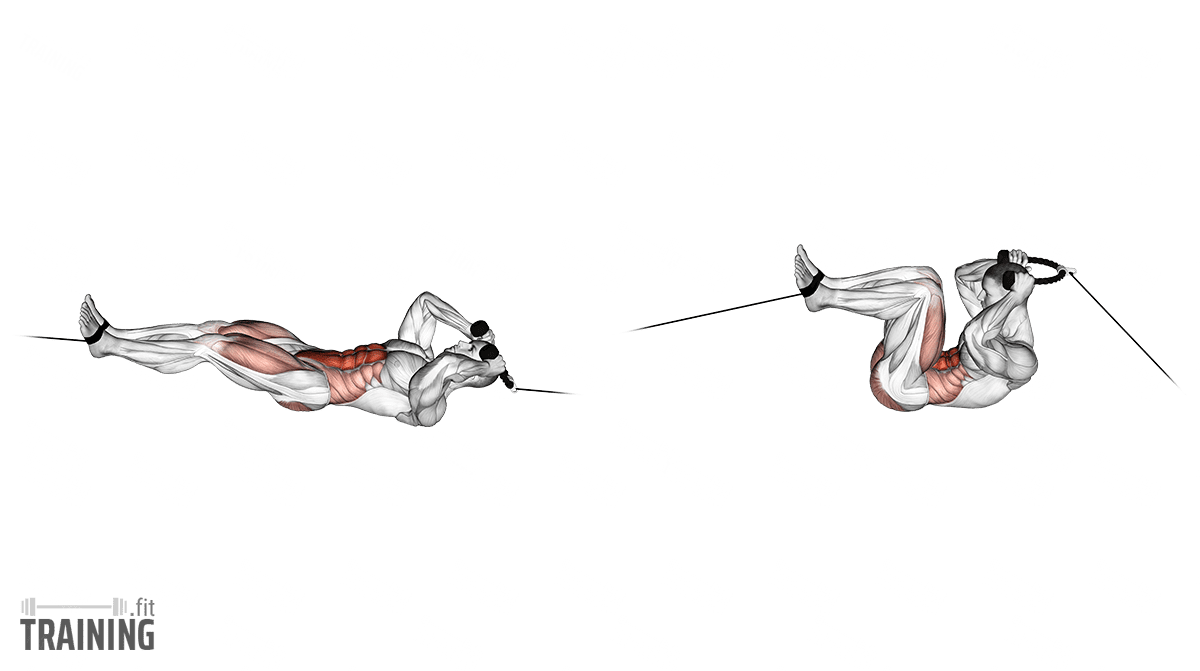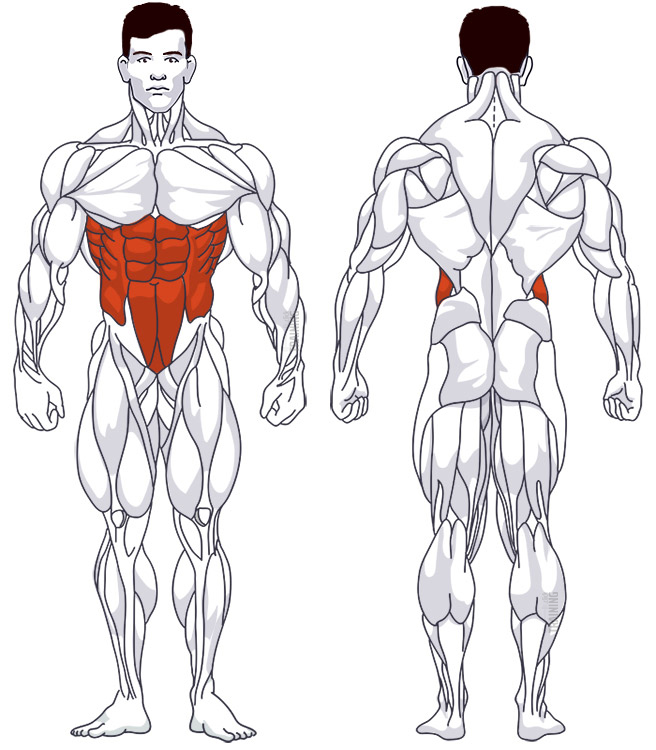Cable Lying Knee Tucks
Isolation exercise, Cable pullOverview

Main muscles
- Abdomen: Straight abdominal muscle
(Musculus rectus abdominis) - Abdomen: External oblique abdominal muscle
(Musculus obliquus externus abdominis)
Cable Lying Knee Tucks: Basics and alternatives

Involved main muscle groups:
Cable Lying Knee Tucks
Cable lying knee tucks are a unique variation of the standard knee raise. Instead of using the “Captain’s Chair,” you lie on the floor and engage your legs (and possibly arms) with the cable pulley. The movement is basically the same: bend your legs and pull your knees toward your upper body.
This knee raise variation is especially useful if you already have toned abs and need more weight to create a noticeable training stimulus. Alternatively, you can perform regular knee raises or hanging knee raises. Reverse crunches are also a useful alternative that doesn’t require additional weight.
Correct execution
You can perform lying knee tucks on the cable tower in two ways: either by attaching only your feet to the cable pulley and securing your torso to the floor with your arms at your sides, or by attaching both your feet and hands to the cable pulley and making the bending motion in both directions.
We’ll focus on the one-sided fixation of the feet in the following description, as it’s usually more practical and easier to perform. To see what the second variant looks like, refer to the article’s main image above.
There are several ways to attach your legs. You can use either a single strap or two separate cable pull handles to securely fasten your feet.
Video tutorial
Step-by-step instructions
Adjust the weight on the cable tower and attach the strap(s) to the mount.
Sit in front of the cable pulley and secure your feet to the straps.
Move back a bit, lie flat on the floor, and raise your legs at 90-degree angles. This position tightens the cable and moves the weight halfway. Simultaneously, place both arms on the floor at an angle pointing down (toward the cable pulley) to stabilize your body (see video above).
Now, slightly extend your legs without fully straightening them. The weight shouldn’t touch the rest of the block on the cable tower. You’re now in the starting position.
Bend your legs and slowly pull your knees towards your torso in a controlled manner until your butt lifts off the floor. Your lower abdomen will bend during this movement. Hold this position for a brief moment.
Extend your legs back to the starting position.
Common mistakes
As with other knee raise variations, momentum is your biggest enemy. Perform the bending movement slowly and in a controlled manner, using the entire range of motion as much as possible. Make sure you don’t yank the weight up or just let it drop. Dropping the weight can also be problematic, as your joints, muscles, and tendons have to catch the falling weight. A slow and controlled lowering of the weight enhances the training stimulus and provides the best possible protection against injury.